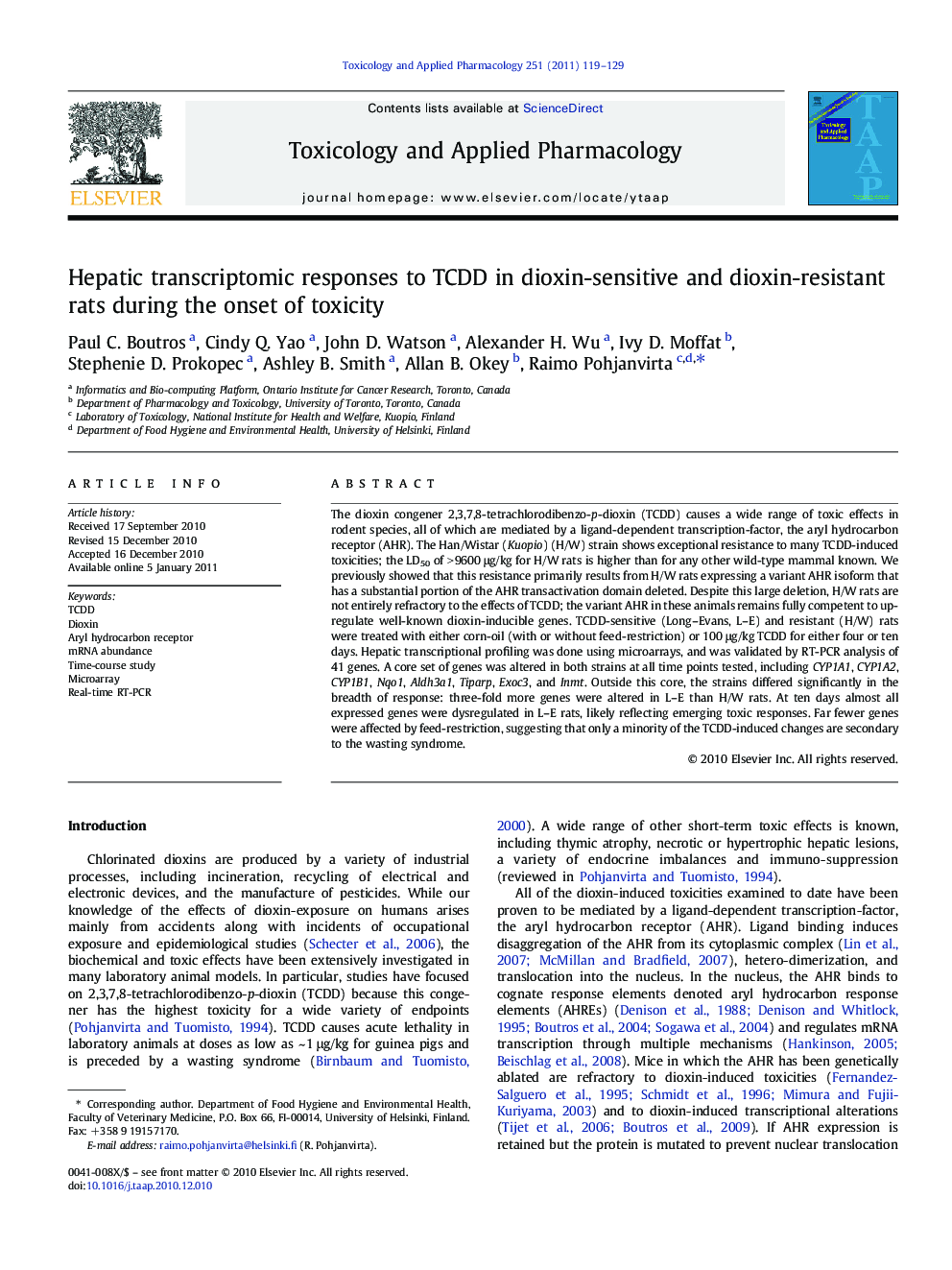| کد مقاله | کد نشریه | سال انتشار | مقاله انگلیسی | نسخه تمام متن |
|---|---|---|---|---|
| 2569968 | 1128560 | 2011 | 11 صفحه PDF | دانلود رایگان |

The dioxin congener 2,3,7,8-tetrachlorodibenzo-p-dioxin (TCDD) causes a wide range of toxic effects in rodent species, all of which are mediated by a ligand-dependent transcription-factor, the aryl hydrocarbon receptor (AHR). The Han/Wistar (Kuopio) (H/W) strain shows exceptional resistance to many TCDD-induced toxicities; the LD50 of > 9600 μg/kg for H/W rats is higher than for any other wild-type mammal known. We previously showed that this resistance primarily results from H/W rats expressing a variant AHR isoform that has a substantial portion of the AHR transactivation domain deleted. Despite this large deletion, H/W rats are not entirely refractory to the effects of TCDD; the variant AHR in these animals remains fully competent to up-regulate well-known dioxin-inducible genes. TCDD-sensitive (Long–Evans, L–E) and resistant (H/W) rats were treated with either corn-oil (with or without feed-restriction) or 100 μg/kg TCDD for either four or ten days. Hepatic transcriptional profiling was done using microarrays, and was validated by RT-PCR analysis of 41 genes. A core set of genes was altered in both strains at all time points tested, including CYP1A1, CYP1A2, CYP1B1, Nqo1, Aldh3a1, Tiparp, Exoc3, and Inmt. Outside this core, the strains differed significantly in the breadth of response: three-fold more genes were altered in L–E than H/W rats. At ten days almost all expressed genes were dysregulated in L–E rats, likely reflecting emerging toxic responses. Far fewer genes were affected by feed-restriction, suggesting that only a minority of the TCDD-induced changes are secondary to the wasting syndrome.
Journal: Toxicology and Applied Pharmacology - Volume 251, Issue 2, 1 March 2011, Pages 119–129